Rajnagar
The town of Rajnagar is located in the Chhatarpur district of Madhya Pradesh and is approximately 4 km from Khajuraho. According to the 2001 Census of India the population of Rajnagar was 12,442 of whom 53% were male and 47% female. The average literacy rate was 55%, which was lower than the national average of 59.5%. Male literacy at 63% is much higher than female literacy at 46%. In addition 18% of the population was under 6 years of age. In 2011 the Census of India reported that the population of Rajnagar was 14,253.
In terms of employment, there are a number of granite quarries in Chhatarpur district but most people are enganged in agriculture and farming.
In the city of Chhatarpur there is a growing commercial sector based mainly on retail businesses.
But the purpose of our visit here is to see one of local primary schools in Rajnagar.
Kanchan Primary School
We visited the local "free" school which operates a shift system from 8.00 am - 1.00 pm and 1.00pm to 4.00pm with four classes. Located in Rajnagar, the co-educational primary school is privately funded and currently has just over fifty pupils.
According to government records the medium of instruction at the school is Hindi, there are three teachers, five classrooms, five blackboards and twenty books.
We are shown around the school and say hello to the children in each of the classes. Some of the children are learning English. The younger children, who sit on the floor, continue with their lesson when we enter the classroom. However we have clearly interrupted the rhythm and concentration of the older children who have desks and chairs and stand obediently when we walk in, but have a tired look of welcoming yet another group of tourists.
At the end of our tour we spend some time with the head teacher in his office which is small and spartan, apart from a chair and table which serves as a desk. He stands in front of the bookshelves, which are bereft of books but has a small trophy or shield, some Indian flags and a small fire extinguisher. We engage in conversation and listen to the challenges faced by the school, their hopes and aspirations. But it is clear that our visit has come to an end and now it's time to make a small donation to the school. We are told by the guide that our donation will probably pay a teacher's salary for a week.
From spiritual life to village and school life
Tuesday, August 16, 2011
 Rajnagar, Madhya Pradesh, India
Rajnagar, Madhya Pradesh, India
Other Entries
-
1A Passage to India
Aug 088 days prior London, United Kingdomphoto_camera0videocam 0comment 0
London, United Kingdomphoto_camera0videocam 0comment 0 -
2Looking for the real India...
Aug 097 days prior Delhi, Indiaphoto_camera8videocam 0comment 0
Delhi, Indiaphoto_camera8videocam 0comment 0 -
3New day - New Delhi
Aug 106 days prior Delhi, Indiaphoto_camera25videocam 0comment 0
Delhi, Indiaphoto_camera25videocam 0comment 0 -
4On the road to Rajasthan
Aug 115 days prior Delhi, Indiaphoto_camera9videocam 0comment 0
Delhi, Indiaphoto_camera9videocam 0comment 0 -
5Jaipur - The pink city
Aug 115 days prior Jaipur, Indiaphoto_camera14videocam 0comment 0
Jaipur, Indiaphoto_camera14videocam 0comment 0 -
6From Palace of Winds to Stargazing and City Palace
Aug 124 days prior Jaipur, Indiaphoto_camera49videocam 0comment 0
Jaipur, Indiaphoto_camera49videocam 0comment 0 -
7From pink city to ghost city
Aug 133 days prior Jaipur, Indiaphoto_camera9videocam 0comment 0
Jaipur, Indiaphoto_camera9videocam 0comment 0 -
8The Jewel in the Crown
Aug 133 days prior Fatehpur Sikri, Indiaphoto_camera22videocam 0comment 0
Fatehpur Sikri, Indiaphoto_camera22videocam 0comment 0 -
9A grand night in Agra
Aug 133 days prior Agra, Indiaphoto_camera7videocam 0comment 0
Agra, Indiaphoto_camera7videocam 0comment 0 -
10Taj Mahal - Crown of palaces
Aug 142 days prior Agra, Indiaphoto_camera24videocam 0comment 0
Agra, Indiaphoto_camera24videocam 0comment 0 -
11All aboard the Shatabdi Express
Aug 151 day prior Agra, Indiaphoto_camera2videocam 0comment 0
Agra, Indiaphoto_camera2videocam 0comment 0 -
12On the road from Jhansi to Khajuraho
Aug 151 day prior Jhansi, Indiaphoto_camera8videocam 0comment 0
Jhansi, Indiaphoto_camera8videocam 0comment 0 -
13Temple "..."in the presence of God"
Aug 151 day prior Khajuraho, Indiaphoto_camera19videocam 0comment 0
Khajuraho, Indiaphoto_camera19videocam 0comment 0 -
14Temples
Aug 16earlier that day Khajuraho, Indiaphoto_camera35videocam 0comment 0
Khajuraho, Indiaphoto_camera35videocam 0comment 0 -
15From spiritual life to village and school life
Aug 16 Rajnagar, Indiaphoto_camera14videocam 0comment 0
Rajnagar, Indiaphoto_camera14videocam 0comment 0 -
16Aarti on the Ganges
Aug 16later that day Varanasi, Indiaphoto_camera17videocam 0comment 0
Varanasi, Indiaphoto_camera17videocam 0comment 0 -
17Morning ritual on the Ganges
Aug 171 day later Varanasi, Indiaphoto_camera26videocam 0comment 0
Varanasi, Indiaphoto_camera26videocam 0comment 0 -
18Sarnath - Starting the Wheel of the Dharma
Aug 171 day later Sarnath, Indiaphoto_camera31videocam 0comment 0
Sarnath, Indiaphoto_camera31videocam 0comment 0 -
19Leaving Varanasi or bye bye Benares
Aug 182 days later Varanasi, Indiaphoto_camera0videocam 0comment 0
Varanasi, Indiaphoto_camera0videocam 0comment 0 -
20Transit Delhi
Aug 182 days later Delhi, Indiaphoto_camera1videocam 0comment 0
Delhi, Indiaphoto_camera1videocam 0comment 0 -
21Overnight luxury in boom town
Aug 182 days later Gurgaon, Indiaphoto_camera0videocam 0comment 0
Gurgaon, Indiaphoto_camera0videocam 0comment 0 -
22Return trip to Delhi airport
Aug 193 days later Gurgaon, Indiaphoto_camera2videocam 0comment 0
Gurgaon, Indiaphoto_camera2videocam 0comment 0 -
23From Delhi to Dabolim
Aug 193 days later Delhi, Indiaphoto_camera1videocam 0comment 0
Delhi, Indiaphoto_camera1videocam 0comment 0 -
24Goa
Aug 193 days later Dabolim, Indiaphoto_camera0videocam 0comment 0
Dabolim, Indiaphoto_camera0videocam 0comment 0 -
25Where the boys go!
Aug 193 days later Sinquerim, Indiaphoto_camera0videocam 0comment 0
Sinquerim, Indiaphoto_camera0videocam 0comment 0 -
26Another day, another hotel
Aug 204 days later Sinquerim, Indiaphoto_camera0videocam 0comment 0
Sinquerim, Indiaphoto_camera0videocam 0comment 0 -
27Roadside to Poolside
Aug 215 days later Sinquerim, Indiaphoto_camera15videocam 0comment 0
Sinquerim, Indiaphoto_camera15videocam 0comment 0 -
28Sunshine and showers in Calangute
Aug 226 days later Sinquerim, Indiaphoto_camera16videocam 0comment 0
Sinquerim, Indiaphoto_camera16videocam 0comment 0 -
29Shopping in Calangute
Aug 237 days later Sinquerim, Indiaphoto_camera1videocam 0comment 0
Sinquerim, Indiaphoto_camera1videocam 0comment 0 -
30POSH - Port Out, Starboard Home
Aug 248 days later Sinquerim, Indiaphoto_camera1videocam 0comment 0
Sinquerim, Indiaphoto_camera1videocam 0comment 0 -
31Postscript
Aug 259 days later London, United Kingdomphoto_camera0videocam 0comment 0
London, United Kingdomphoto_camera0videocam 0comment 0

 Rajnagar, Madhya Pradesh, India
Rajnagar, Madhya Pradesh, India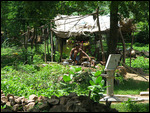
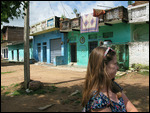
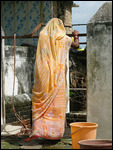
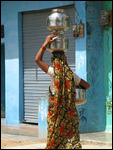
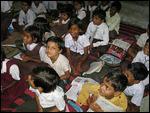
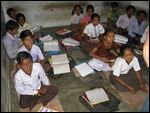
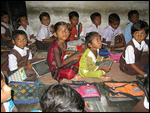
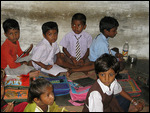
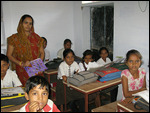
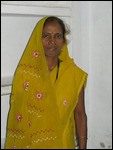
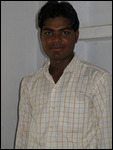

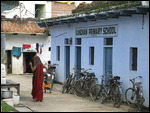
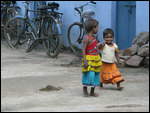


2025-05-23